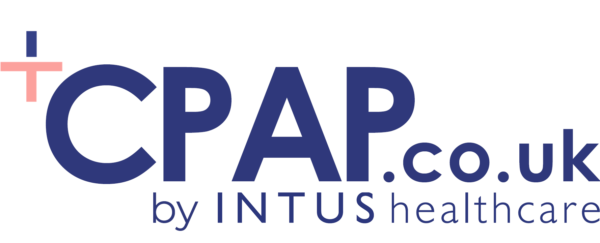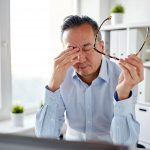Last updated on April 28th, 2023 at 04:18 pm
Visiting a hospital’s sleep clinic used to be a somewhat scary and mysterious event though in this information age the mystery surrounding what happens during a sleep lab test has been lifted by fellow bloggers from around the world.
Here are a few typical snippets from sleep apnoea patients who have been there, done that. Follow the links to read the full posts so you can feel enlightened about the journey you are about to embark on. To ease your mind and increase the chance of being able to fall asleep on the night, I recommend you get your doubts and questions answered before going. That way you can enjoy a largely stress-free night which enables a good read-out of the sleep data they record to diagnose your sleep disorder.
Gwenneth, who blogs on “Blog around the bend” wrote in a post entitled “The Strange World Of Sleep Apnea“:
So let me describe the process for those of you who have never heard of this. You check in to a sleep lab which resembles a hotel room. You are asked to change into your comfy pajamas you brought from home. They explain the process and tell you that you can do whatever you would normally do at home when going to sleep….read, watch tv, etc.
She goes on to describe how the polysomnogram is set up, with all the wires attached and so on. After recording a few hours worth of data, during a split-test you get put on CPAP to see if this improves the symptoms. Gwenneth continues:
But believe it or not I did finally go to sleep. Normally you would spend the night hooked up to the wires, then they would analyze the data and have you come back in to sleep with a CPAP machine if needed however my apnea was so severe they woke me only 2 hours in to try the machine.
For Gwenneth it all turned into one great success story. Sleep Apnea was diagnosed and CPAP showed immediate improvements. She was supplied her own CPAP machine and nasal mask and now sleep “happily ever after”:
My children now tease me a bit that I look like a scuba diver…and they find the silence from no more snoring slightly eerie when they wake up in the middle of the night. However, I can not believe the difference in my “quality of life” since using the CPAP machine. I sleep soundly and no longer fall asleep during the day or during movies, my feet no longer swell and hurt to walk on them when I first get up, my blood pressure and weight have both dropped, I no longer toss and turn in bed, I no longer snore, my mouth no longer feels like the Sahara desert in the morning, and my husband doesn’t wake every few minutes to see if I am still breathing. It didn’t take me as long as I though to get used to it.
“PD Warrior” is another blogger who wrote about his sleep lab experience. In a post called “things that go bump in the night” PD Warrior recalls the events of the night. As happens so many times with male OSA sufferers, it was his wife who convinced him to go get a sleep test done. This goes to show, it’s not just the sufferer who suffers!
At the request of my wife, I participated in a “sleep study” at my local hospital’s sleep lab, mostly due to my horrendous snoring. I avoided the study for a long time. I always knew I was a snorer, and attributed it to something I inherited from my father. […] As it turned out, when I wasn’t snoring, I wasn’t breathing; something which my wife found to be even more disconcerting than the snoring, causing her to lose even more sleep as she stayed awake listening to make sure I didn’t stop breathing altogether.
PD Warrior then recalls the conversation with the sleep tech, whilst dismantling the recording equipment. When asked how many times he figured he wasn’t breathing or getting enough air, he guessed once or twice. The sleep technician said he had stopped breathing 738 times!
One week later I was fitted for a CPAP machine (continuous positive airway pressure) Now, when I finally do fall asleep, I sleep like a baby, and I actually feel refreshed when I wake up.
Interestingly, he finishes with some quotes relating sleep disorders to parkinson disease (which he suffers from as well). As we often find here on the CPAP blog, sleep disorders are often accompanied by other forms of disease, disorders or syndromes.
The next blogger recalling how he got through the night at the sleep lab also links sleep apnoea to seemingly unrelated health problems. Yadev reports to have cured gout along with sleep apnoea. By just not sleeping on his back, he tackled sleep apnoea enough to avoid further treatment. About the sleep lab visit during which he was hooked up to an oximeter alone:
This physician arranged a consultation for me with a pulmonologist (lungs)/sleep specialist who had me tested overnight with a monitoring device called a pulse oximeter. This machine had a cable attached to a sensor that slips over a finger, and illuminates it like ET’s finger. It is not uncomfortable to be connected to it. It measures both the pulse rate and the blood’s oxygen saturation percentage. The machine that was attached to me was able to print out a reading every few minutes on a thermal paper tape so that my overnight readings were recorded for examination in the morning. The first sign of a possible sleep apnea problem is to see if overnight the oxygen saturation level ever dips below 90%. Mine dipped down to 80%. I was recommended to have further, more extensive testing as an outpatient in the hospital’s sleep lab. But to me the problem was clear, and worrisome.
So after this initial test, based on the oxygen level drop in the blood, he was booked in for a multi-channel sleep test.
At the sleep lab I was attached to many types of sensors all over my head and body to monitor many things overnight, including sleep apnea. I found out in that test that my blood oxygen saturation level had dipped as low as 88%. It was still below the 90% target, but I wondered why it was so much higher than the 80% measured in the hospital.
His post continues describing a DIY method of avoiding apnoea events by making sure he doesn’t sleep on his back.
Shauna is yet another blogger who described in great detail her sleep apnoea journey, including the visit to the sleep lab. In a post called “Just call me Darth Vader” she writes:
I stop breathing 56 times an hour! It is a little unnerving to think that I was so sick and never knew it. Read on and see how dangerous it is. I had so many symptoms of sleep apnea and was relating them all to other conditions which I was seeking medical help for!
My doctor referred me to a sleep disorder center. In the hospital where I work we have a lovely new Sleep Lab. The test that they do to confirm the sleep apnea is called Nocturnal polysomnography. During this test, I was hooked up to equipment that monitors my heart, lung and brain activity, breathing patterns, arm and leg movements, and blood oxygen levels while I slept. It was really weird to try to sleep while hooked up to monitors on my legs, chest, and head/scalp. I think that it ended up being 12-15 electrodes hooked up to me total. Plus they video tape you while you are sleeping.
Especially in the UK, not all sleep lab tests involve a full PSG (Polysomnography) with the vast majority being oximeter alone or limited data (respiratory flow, pulse and oxygen levels).
If you want to read more first-hand sleep lab experiences online, try Google’s blog search. There are hundreds of blog posts about this topic, many from people who have done the test themselves.

